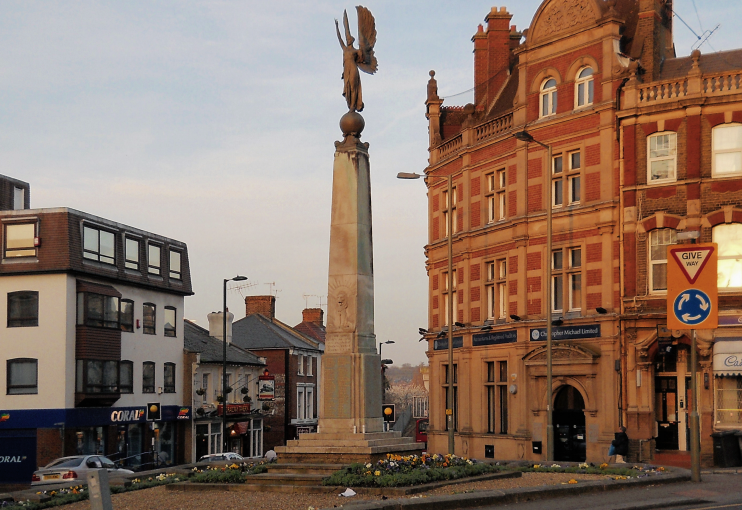New Barnet
New Barnet, Barnet
A Victorian township that sprang up south-east of Chipping Barnet following the opening of a station on the new Great Northern Railway line in 1850

After the opening of Barnet station (as it was called until 1884), roads were laid out on both sides of the railway tracks, though housebuilding proceeded very slowly along them at first. Formed in 1866, the East Barnet Gas and Water Company built a gasworks on Albert Road and sank wells beneath what is now Artesian Grove.
Within a few years a clear distinction had arisen between the villas erected for the middle classes on the higher slopes to the west and the working-class housing and shops east of the tracks. Many of the latter homes provided domestic servants for the former. The grandest estate was Lyonsdown, to the south-west, laid out in the grounds of the former house of that name. Elsewhere, most of New Barnet had hitherto been meadowland.
Writing in his Handbook to the Environs of London in 1876, James Thorne described New Barnet as “one of those new half-finished railway villages that we have come to look on as almost a necessary adjunct of every station within a moderate distance of London.”
The pace of suburban growth accelerated at the turn of the century, due in large part to the efforts of the entrepreneurial estate agent and speculative developer, E Fergusson Taylor, who has been called ‘the creator of New Barnet’. Taylor marketed his properties with a vigour that could make modern practitioners blush, as well as lobbying for the construction of churches and chapels – and promoting a temperance hall and coffee house that might divert drinkers from the Railway Bell, Black Boy (now Lord Kitchener) and Railway Tavern.
In 1891–2 the East Barnet Valley local board built an Italianate town hall on Station Road (originally called New Barnet Road) and the station was wholly rebuilt in 1896. On East Barnet Road St James’s church was consecrated in 1911. By the outbreak of the First World War, New Barnet’s development was almost complete.
Shown in the photograph at the top of this article,* the district’s lofty war memorial was unveiled opposite the Edwardian bank in March 1921.
In the early 1930s John Ward established a ‘folk park’ – an open-air museum – in the grounds of a large stuccoed house at 89 Park Road, where New Barnet meets Cockfosters. A medieval tithe barn was brought here from Birchington in Kent (where it had been in the way of some bungalows that needed to be built) and installed in the garden. (Click here for a Bing bird’s eye view of the house and barn.) Ward converted the barn into the mother church of his religious confraternity, the Abbey of Christ the King – but he was bankrupted by a 1945 court case in which he was found guilty of enticing a 16-year-old girl away from her family to join the mystical sect.
The house was then sold to the Mayfair art dealer William Ohly, who turned it into the Abbey arts centre – a gallery, museum and commune that became a base for expatriate Australian artists. The gallery remained open until 1977, latterly under the ownership of Ohly’s son Ernest. The folk park’s exhibits later formed the nucleus of the collection at the Abbey museum of art and archaeology in Queensland, Australia.
Several office blocks were built on Station Road in the 1960s and 70s, plus a couple more on East Barnet Road. Some have since been converted to or replaced by flats. The most egregious 21st-century apartment block is Station Road’s Comer House.

As shown in the photograph above, St James’s has been endowed with an extension that only half matches the original. This might have been regrettable had the building been more beautiful in the first place.
Following a ten-year spell as a restaurant, the town hall was converted into flats in 2006.
Major residential developments are presently afoot on sites that had previously been earmarked for Asda and Tesco supermarkets. The larger scheme is at the disused gasworks, which may eventually become the Victoria Quarter, with perhaps around 500 new homes. However, an ambitious planning application submitted in 2020 by Fairview New Homes received hundreds of objections and was unanimously rejected by Barnet’s planning committee.
